Linda Ye, Jennifer Chien, Bill Lee, David Yudovich
Duke University
ABSTRACT
 Figure 1: Completed Devices in Their Entirety
Figure 1: Completed Devices in Their Entirety
BACKGROUND
Goodwill Industries of Eastern North Carolina (GIENC) is a non-profit organization that helps people gain job skills by providing educational and life-enriching activities. In the GIENC Nature Center Program, adult participants with varying cognitive and/or physical disabilities engage in horticulture to grow vegetables donated to the Eastern North Carolina Food Bank. Most of the volunteers have had traumatic brain injuries (TBI) that cause long-lasting physical, cognitive, social, emotional, and behavioral effects (1).
The volunteers in the Nature Center Program tend to have limitations associated with coordination, memory and concentration. Because planting tasks often require high levels of dexterity and coordination, many volunteers experience difficulties with various planting operations, resulting in diminished independence, reduced motivation, and lower productivity. The main planting challenges outlined by the staff include spacing seeds and plants in a straight line at even intervals, digging holes with desired diameter and depth, and handling small seeds with 1-3 seed resolution. Without substantial help from staff, the planting often appears jagged and clustered, requiring time consuming and wasteful weeding.
PROBLEM STATEMENT
The goal of this project is to help volunteers with disabilities gain independence in their planting therapy program, in addition to planting seeds more easily and efficiently.
RATIONALE
Although commercial row-seeding devices are available (2), the majority of such devices are complex and bulky. Persons with cognitive or physical disabilities may encounter difficulties with these devices due to distracting functionalities, complex operations, and electrical safety concerns, all of which require additional supervision and further deny volunteers independence.
The three constructed devices allow precise spacing, digging, and seeding. When using the devices, the volunteers perform tasks with more accuracy, ultimately resulting in increased independence, motivation, and demonstrated productivity. Unlike many automatic all-in-one commercial products, these devices preserve therapeutic hands-on interaction with the earth.
DESIGN AND DEVELOPMENT
 Figure 2: Spacer with rings
Figure 2: Spacer with rings
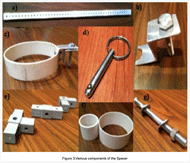 Figure 3:Various components of the Spacer
Figure 3:Various components of the Spacer
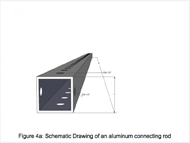 Figure 4a: Schematic Drawing of an aluminum connecting rod
Figure 4a: Schematic Drawing of an aluminum connecting rod
 Figure 4b: The ring marker, the arrow marker and the L brackets
Figure 4b: The ring marker, the arrow marker and the L brackets
 Figure 4c: L,T, and I Connectors
Figure 4c: L,T, and I Connectors
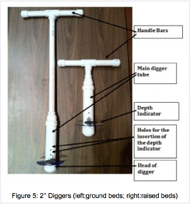 Figure 5: 2’’ Diggers (left:ground beds; right:raised beds)
Figure 5: 2’’ Diggers (left:ground beds; right:raised beds)
Seeder
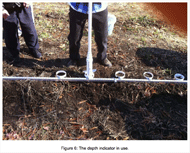 Figure 6: The depth indicator in use.
Figure 6: The depth indicator in use.
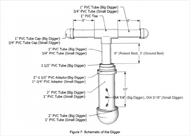 Figure 7: Schematic of the Digger
Figure 7: Schematic of the Digger
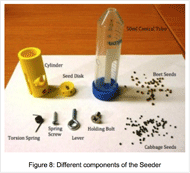 Figure 8: Different components of the Seeder
Figure 8: Different components of the Seeder
testing, we also replaced the extension spring on the outside of the external tube with an internal torsion spring. This substantially increased the safety and usability of the device (Figure 9). The schematic of the seeder is shown in Figure 10.
Finally, for storage and transportation, a golf bag and a 50 gallon container were provided to house and transport all planting device components.
EVALUATION
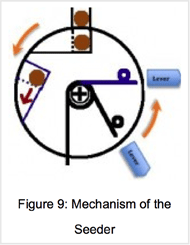 Figure 9: Mechanism of the Seeder
Figure 9: Mechanism of the Seeder
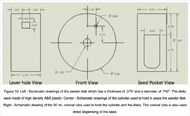 Figure 10: Left - Schematic drawings of the seeder disk which has a thickness of .375" and a diameter of .740". The disks were made of high density ABS plastic. Center - Schematic drawings of the cylinder used to hold in place the seeder disk. Right - Schematic drawing of the 50 mL conical tube used to hold the cylinder and the disks. The conical tube is also used direct dispensing of the seed.
Figure 10: Left - Schematic drawings of the seeder disk which has a thickness of .375" and a diameter of .740". The disks were made of high density ABS plastic. Center - Schematic drawings of the cylinder used to hold in place the seeder disk. Right - Schematic drawing of the 50 mL conical tube used to hold the cylinder and the disks. The conical tube is also used direct dispensing of the seed.
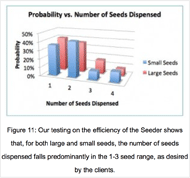 Figure 11: Our testing on the efficiency of the Seeder shows that, for both large and small seeds, the number of seeds dispensed falls predominantly in the 1-3 seed range, as desired by the clients.
Figure 11: Our testing on the efficiency of the Seeder shows that, for both large and small seeds, the number of seeds dispensed falls predominantly in the 1-3 seed range, as desired by the clients.
Seeder Quantitative Analysis
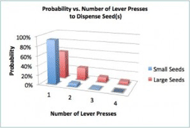 Figure 12: The second testing on the Seeder evaluates how many lever presses are required to dispense any seeds. The data shows that the user typically only needs to press once to dispense seeds. Multiple presses were required more often for the larger beet seeds, which displayed wide variability in size.
Figure 12: The second testing on the Seeder evaluates how many lever presses are required to dispense any seeds. The data shows that the user typically only needs to press once to dispense seeds. Multiple presses were required more often for the larger beet seeds, which displayed wide variability in size.
The objective of the quantitative analysis is to test the efficiency and accuracy of the Seeder. We performed analysis on the Seeders for both the small and large seeds. We first performed a test to see how many lever presses it took to dispense any seeds. Then, we tested how many seeds the Seeder ejected for each successful dispense. The results are shown in Figures 11 and 12. Figure 11 shows that the device fulfills our clients ’ desired seed resolution since 1-3 seeds were dispensed over 80% of the time while Figure 12 displays the efficiency of the Seeder, which typically required only one lever press to dispense a seed. Efficiency was best for small seeds, which were far more uniform in size than the larger beet seeds.
COST AND EXPENSES
Cost of producing all three devices was $393. The Spacer materials, including the aluminum rods ($158) for the Spacer rods and arrow markers, PVC tubes for the ring markers ($20), resin nylon connectors ($78), and release pins ($35), cost $286. The Digger materials. including HDPE slates for depth indicators ($4), PVC pipes for Digger body ($16), and release pins ($10), cost $30. The Seeder materials, including torsion springs ($10), conical tubes ($2), and ABS plastic for the Seeder disk and cylinder (provided by Pratt School of Engineering, estimated $15), cost $12. Additional materials, including golf bag ($25), storage container ($10), and other hardware such as bolts nuts and washers ($30), cost $65.
CONCLUSION
The Spacer is “one of the most versatile tools made”. Our clients have “continued to use it in the raised beds and fields alike, both with great success”. “ Not only can the device be quickly assembled, but the ring and arrow markers also allow for varying degrees of support and independence. Moreover, the stand-alone ring markers of different sizes provide higher flexibility and “were especially appreciated by our participants with visual impairment.” Overall, the Spacer is a complete solution for the supervisors’ stated needs, and in their words “It’s a tool that lends itself well to flexibility”.
The Digger enables the volunteers to make a hole of accurate diameter and depth in the ground. The volunteers can simply position the end of Digger by the mark and easily push the rod into the ground with upper body strength by leaning on the handle. When asked to evaluate the usefulness of the Digger, the clients especially liked the “[depth indicator] that will be inserted and then able to be removed, to assist with depth of planting”, as “it will be beneficial to those with visual impairments and also those with special difficulties”.
The Seeder helps alleviate an otherwise tedious and time-consuming task for the volunteers and supervisors at GIENC. The Seeder now allows users to quickly dispense seeds directly into the hole with a simple press of a lever. Since the Seeder reliably dispenses only 1 to 3 seeds at a time, even those with impaired vision can operate the device. The clients mentioned that “we like the concept of the Seeder. It worked with small and large hands, alike and felt natural to use.” One limitation of the present device is the durability of the ABS plastic used in the disk and cylinder; large forces sometimes encountered due to jammed seeds can cause premature wear. Future devices should utilize a harder material such as aluminum for these parts. Overall, we have produced three working devices, each of which has multiple functions and configurations that address the varied needs of our clients. The combination of devices is robust in terms of durability of materials, number of supplied components, ease of use, and convenience of components replacement.
REFERENCES
(1) Traumatic Brain Injury Information Page. National Institute of Neurological Disorders and Stroke. Retrieved December 2, 2011, from http://www.ninds.nih.gov/disorders/tbi/tbi.htm.
(2) MWP GSP 31m Vegetable Garden Seed Row Planter. Google product search. Retrieved December 2, 2011, from http://www.amazon.com/Vegetable-Garden-Seeder-Yellow-41-5/dp/B0012C6D24.
ACKNOWLEDGEMENTS
We would like thank Dr. Laurence Bohs and Joshua Doherty for their guidance, Steve Earp for his assistance in the machine shop, and Mike Desoto and Patrick McGuire for their help with SolidWorks and the 3D printer. Finally, we are most grateful for our clients and volunteers at GIENC for their cooperation, patience, and critical input throughout the project. This project is supported by the National Science Foundation under Grant No. CBET-0967221.